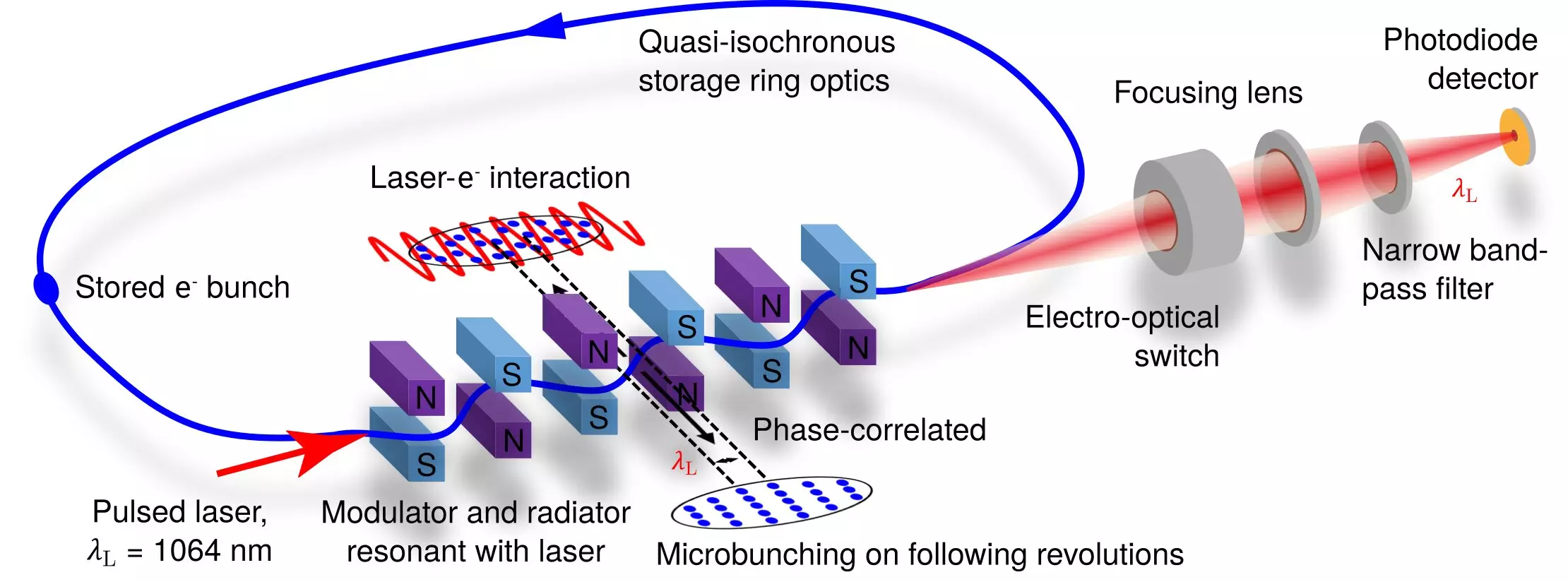When ultrafast electrons are deflected, they emit light—known as synchrotron radiation. This light is utilized in storage rings, where magnets compel the particles onto a closed path, generating longitudinally incoherent light with a broad wavelength spectrum. While monochromators can extract individual wavelengths from the spectrum, the radiant power is significantly reduced to just a few watts. The idea of delivering monochromatic, coherent light with outputs of several kilowatts, akin to a high-power laser, presents an intriguing challenge in materials research.
Physicist Alexander Chao and his doctoral student Daniel Ratner made a groundbreaking discovery in 2010. They found that by shortening the electron bunches circulating in a storage ring to lengths smaller than the emitted light wavelength, the radiation becomes coherent and exponentially more powerful. This key insight provided a new direction for enhancing the quality and intensity of synchrotron radiation for research purposes.
Chinese theorist Xiujie Deng defined a set of parameters for isochrone or “low-alpha” rings, specifically for the Steady-State Micro-Bunching project (SSMB). These rings, when combined with laser interactions, produce extremely short particle bunches measuring only one micrometer in length. A collaborative research effort involving HZB, Tsinghua University, and PTB successfully demonstrated the functionality of this concept in a proof-of-principle experiment conducted in 2021 at the Metrology Light Source (MLS) in Adlershof.
The research team’s validation of Deng’s theory through extensive experiments marks a significant milestone in the development of a new type of SSMB radiation source. However, project manager Jörg Feikes acknowledges that significant time and effort will be required for this technology to reach its full potential. Drawing parallels to the evolution of free-electron lasers, Feikes emphasizes the long-term nature of such transformative developments, where initial experiments gradually evolve into complex kilometer-long accelerator structures.
The utilization of coherent light in materials research holds immense potential for advancing scientific discoveries and technological innovations. By harnessing the power of synchrotron radiation and implementing novel techniques such as micro-bunching, researchers can unlock new possibilities for studying the properties and behaviors of various materials at the atomic and molecular levels. As the field continues to evolve, collaboration between diverse scientific disciplines and investment in cutting-edge infrastructure will be essential for realizing the full benefits of coherent light sources in materials research.


Leave a Reply